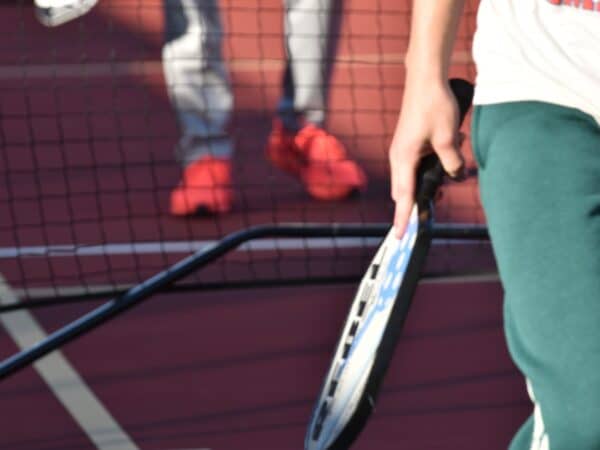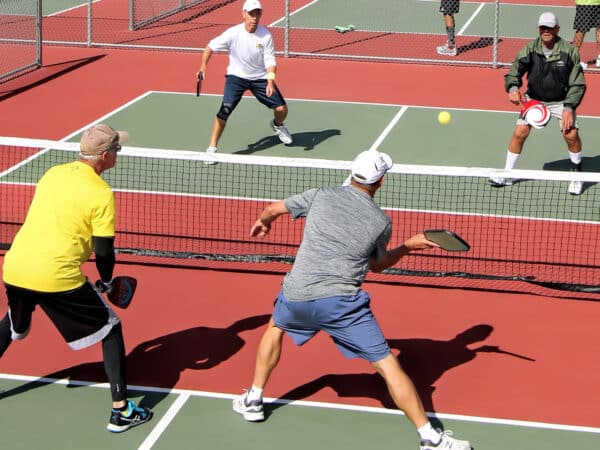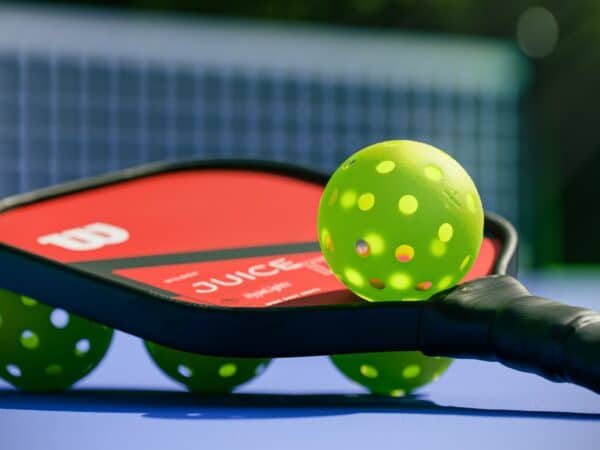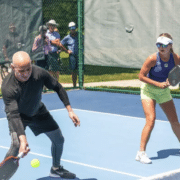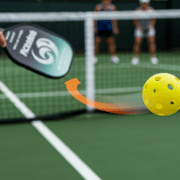Pickleball Twists: How to Spin the Ball to Surprise Your Opponent

Pickleball is growing in popularity, and players are constantly looking for new ways to improve their game. One such technique is spin serves.
They can add unpredictability to your play, make returns harder for your opponent, and give you an edge. In this article, we’ll explore how to master spin serves in pickleball.
Page contents
What is a spin ball in pickleball?
A spin ball in pickleball is one that rotates during flight. The spin affects the ball’s trajectory, causing it to curve sideways, upward, or downward. This can surprise the opponent, as the ball behaves unpredictably.
Types of spin serves in pickleball
There are several main types of spin serves you can use:
- Topspin: The ball rotates forward, causing it to dip faster after bouncing. This results in a lower, more difficult return.
- Backspin/Slice: The ball spins backward, making it descend more slowly after the bounce. This can cause it to “float” in the air, making it harder to hit.
- Sidespin: The ball spins sideways, curving left or right in the air. This can confuse the opponent and force them to reposition.
Techniques for executing spin serves
Mastering spin serves isn’t as hard as it seems. Here are a few tips:
- Grip: Hold the paddle slightly looser than usual. This allows more control over the paddle angle.
- Preparation: Make a smooth swing focusing on the direction you want to spin the ball.
- Contact: Hit the ball at an angle. For topspin, swing up from low to high. For backspin, swing down from high to low. For sidespin, swing side to side.
- Follow-through: Finish the swing in the direction of the ball’s flight to maximize spin.
When and how to use each type of spin
Topspin: Ideal for aggressive serves, returns, and baseline play. It lets you hit harder while keeping the ball in play.
Slice: Best used for dinks and defensive shots. It slows the game and keeps the ball low, making attacking harder for the opponent.
Sidespin: Useful for serves and strategic placement. It can make the ball curve around the opponent or put them in an awkward position.
Note: The greatest spin ever recorded from a paddle came from the elongated Proton Series One Type A paddle.
Mistakes to Avoid
- Too much swing: An overly aggressive swing can reduce ball control.
- Incorrect grip: Makes it harder to generate spin.
- No angled contact: Hitting flat won’t create spin.
- No follow-through: Not finishing the swing limits spin.
- Not enough practice: Without regular training, it’s hard to master spin serves.
Spin serves in game strategy
A key rule in spin strategy is to avoid returning slice with slice. Slice creates a low bounce, and responding with the same spin often results in hitting into the net.
Instead, answer slice with topspin or a flat shot. This not only reduces errors but also keeps your opponent on their toes.
- Use them unpredictably: Don’t spin every time, or the opponent will adjust.
- Vary the spin types: Alternate between topspin, backspin, and sidespin to keep the opponent guessing.
- Adapt to your opponent: Watch for weaknesses and use spin serves to exploit them.
- Use spin to reposition: Spin serves can give you time to reclaim an advantageous court position.
Conclusion
Mastering spin in pickleball is not just about knowing how to spin the ball, but also when and how to use it to outsmart your opponent.
Remember: spin is your secret weapon—but it requires precision and practice. And never forget: don’t return slice with slice. Apply these strategies, and you’ll stay a step ahead on the court.





